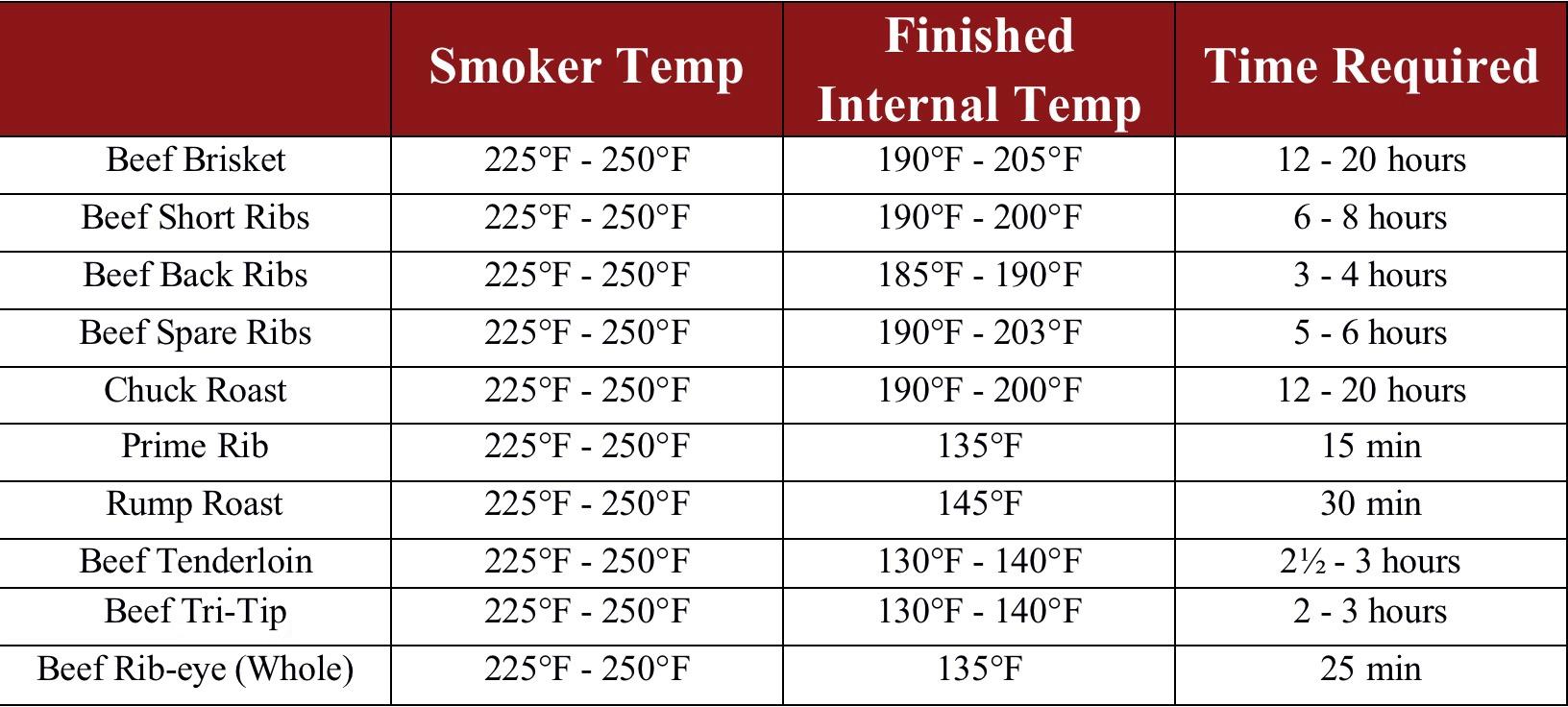When it comes to smoking meat, achieving the perfect temperature is crucial for creating tender, flavorful results. Whether you're a seasoned pitmaster or a beginner, having a smoked meat temperature chart can be a valuable tool in your culinary arsenal. In this article, we will explore the importance of temperature in smoking meat and provide a comprehensive guide to help you achieve mouthwatering results every time.
The Importance of Temperature in Smoking Meat
Temperature plays a vital role in the smoking process as it affects both the texture and flavor of the meat. The low and slow cooking method used in smoking allows the meat to break down collagen, resulting in tender and juicy cuts.
However, it's essential to maintain the right temperature throughout the smoking process. If the temperature is too high, the meat may become dry and tough. On the other hand, if the temperature is too low, the meat may not cook thoroughly, posing a risk of bacterial contamination.

To ensure the best results, it's important to follow a smoked meat temperature chart that outlines the ideal internal temperatures for different types of meat.
Recommended Internal Temperatures for Smoked Meat
Here are the recommended internal temperatures for various types of smoked meat:
- Beef Brisket: 195-205°F (90-96°C)
- Pork Butt/Shoulder: 195-205°F (90-96°C)
- Ribs: 195-203°F (90-95°C)
- Whole Chicken: 165°F (74°C)
- Turkey: 165-175°F (74-79°C)
- Salmon: 145°F (63°C)
It's important to note that these temperatures are guidelines and may vary depending on personal preference and the specific cut of meat. Always use a reliable meat thermometer to ensure accurate readings.
Tips for Achieving the Right Temperature
When smoking meat, there are several factors to consider in order to achieve the right temperature:
Preparing Your Smoker
Prior to smoking, ensure that your smoker is properly prepared. This includes stocking up on charcoal and wood, especially in cold weather, as smokers tend to consume more fuel in low temperatures. Having all the necessary tools and utensils readily available will also help maintain a smooth cooking process.
Managing Airflow
Proper airflow is crucial for maintaining consistent temperatures in your smoker. Monitor the wind direction and adjust the intake vents accordingly. Increased airflow can raise temperatures, while insufficient airflow can lead to heat loss. Finding the right balance is key to achieving the desired temperature.
Choosing the Right Smoker
The type of smoker you use can also impact temperature control, especially in cold weather conditions. Smokers with thin outer walls may struggle to maintain consistent temperatures, while those with thicker walls are more insulated, making it easier to retain heat. Understanding your smoker's capabilities and adjusting accordingly will help you achieve optimal results.
Using Insulation
In colder climates, insulating your smoker can help maintain cooking temperatures and conserve fuel. Smoker jackets or blankets specifically designed for your smoker are ideal, but DIY options such as fireproof materials or foil insulation can also be effective. Ensure that the insulation allows for proper airflow and does not pose a safety risk.
Frequently Asked Questions
Q: Is 200 degrees good for smoking meat?
A: Absolutely. Smoking meat at 200 degrees Fahrenheit (93 degrees Celsius) is a common temperature range for achieving tender and flavorful results. However, it's important to refer to the specific smoked meat temperature chart for accurate internal temperature guidelines.
Q: What if my smoker struggles to reach cooking temperatures in cold weather?
A: Smokers with thin outer walls may face challenges in colder weather. Consider using insulation such as smoker jackets or blankets to help maintain cooking temperatures. Additionally, choosing a smoker with thicker walls or using alternative cold weather cooking methods, like pellet grills, can also be effective.
Q: Can I smoke meat when it's cold outside?
A: Yes, you can smoke meat in cold weather. However, it's important to be prepared by stocking up on fuel and ensuring proper insulation to maintain consistent temperatures. Adjusting your smoker's airflow and using the right cooking techniques will help you achieve excellent results regardless of the outdoor temperature.
In Conclusion
Smoking meat is a culinary art that requires careful temperature control to achieve delicious results. By following a smoked meat temperature chart and implementing the tips mentioned in this article, you can elevate your smoking game and impress your family and friends with perfectly cooked, flavorful meat.
If you want to know other articles similar to Smoked meat temperature chart: perfectly cooked meat guide you can visit the Temperature category.


Related Articles